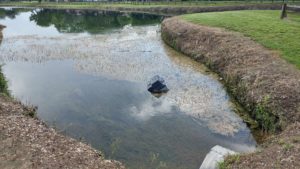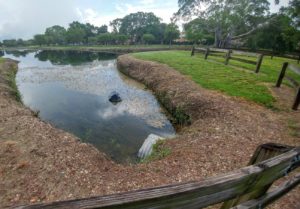The World Below: Time-Lapse | Earth 2 from Bruce W. Berry Jr on Vimeo.
I never thought that I’d be making another one of these, but with all of the new footage from the International Space Station (ISS) that has been made public, I decided to give it another go.
All of 4K video and Time-lapse sequences were taken by the astronauts onboard the ISS (NASA/ESA). All footage has been edited, color graded, denoised, deflickered, stabilized by myself. Some of the 4K video clips were shot at 24frames/sec reflecting the actual speed of the space station over the earth. Shots taken at wider angels were speed up a bit to match the flow of the video.
Some interesting facts about the ISS: The ISS maintains an orbit above the earth with an altitude of between 330 and 435 km (205 and 270 miles). The ISS completes 15.54 orbits per day around the earth and travels at a speed of 27,600 km/h; 17,100 mph).
The yellow line that you see over the earth is Airgolw/Nightglow. Airglow/Nightglow is a layer of nighttime light emissions caused by chemical reactions high in Earth’s atmosphere. A variety of reactions involving oxygen, sodium, ozone, and nitrogen result in the production of a very faint amount of light (Keck A and Miller S et al. 2013).
Hope you enjoy and thank you all again for watching!
Music: “Journey to the Line” composed & performed by “Hans Zimmer”
All rights reserved to their respective owners.
Edited by: Bruce W. Berry Jr. @ Website: |Bruce Wayne Photography|
Time-Lapse Image Courtesy of the Earth Science and Remote Sensing Unit, NASA Johnson Space Center
https://eol.jsc.nasa.gov/BeyondThePhotography/CrewEarthObservationsVideos/
4K video Courtesy of NASA
https://www.nasa.gov/content/ultra-high-definition-video-gallery
Last clip: imagery courtesy of the European Space Agency
Credit: NASA/ESA/M.Kornmesser
https://www.eso.org/public/videos/earth_2015_4k/
Footage Note: The slower video represents true speed of the ISS or was shot in 4K at 24fps. These clips are all marked with an *. Unfortunately I do not know all of the locations of the shots as many files did not have a name on them and just the mission numbers.
Locations of Footage in the order they appear:
1. Kounotori 4, unmanned cargo spacecraft *
2. Unknown*
3. Quebec City, Canada
4-7. Unknown*
8. Ucayali River, Peru*
9. Unknown*
10. Quebec City and St. Lawrence River, Canada*
11-12. Unknown*
13. Western United States*
14. Unknown*
15. Ataturk Dam Lake, on the Euphrates River, Turkey *
16. Nile River, lower Egypt*
17. Dubai, United Arab Emirates*
18. Bahamas*
19. The Nile Delta, Egypt*
20. Texas Gulf Coast*
21. Unknown*
22. Unknown
23. Aurora Borealis over North America
24. Aurora Borealis over Canada and USA
25. Iberian Peninsula to Red Sea
26. Southern Hemisphere Aurora and Sunrise
27. The Nile River Delta to Mecca, Middle East
28. Mexico to Maine, USA
29. Balearic Sea to Lake Turkana
30. Atlantic Ocean to Kazakhstan
31. Aurora Borealis over the Atlantic Ocean
32. The Earth and sunrise in 4K
https://www.bruce-wayne-photography.com/



